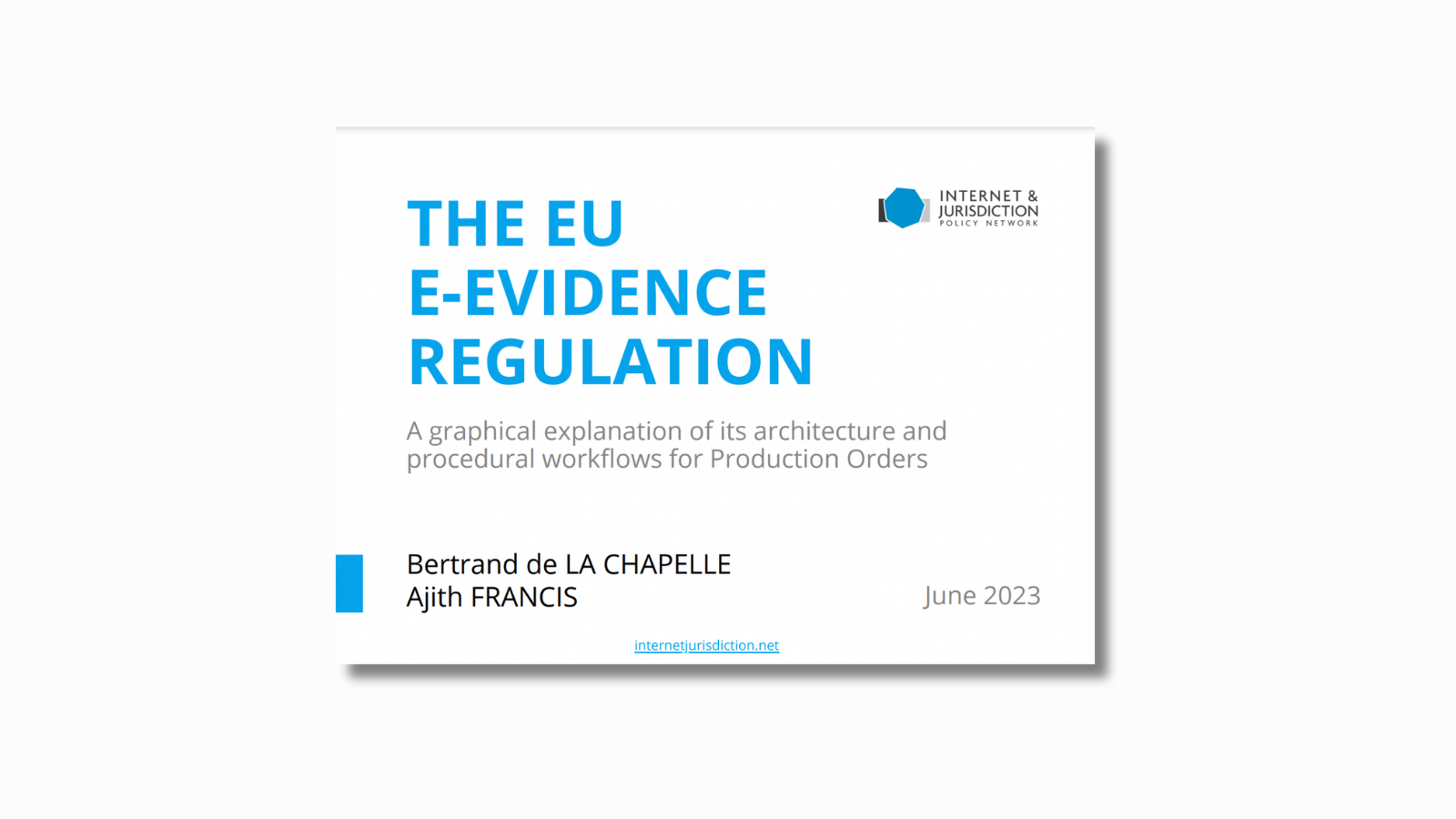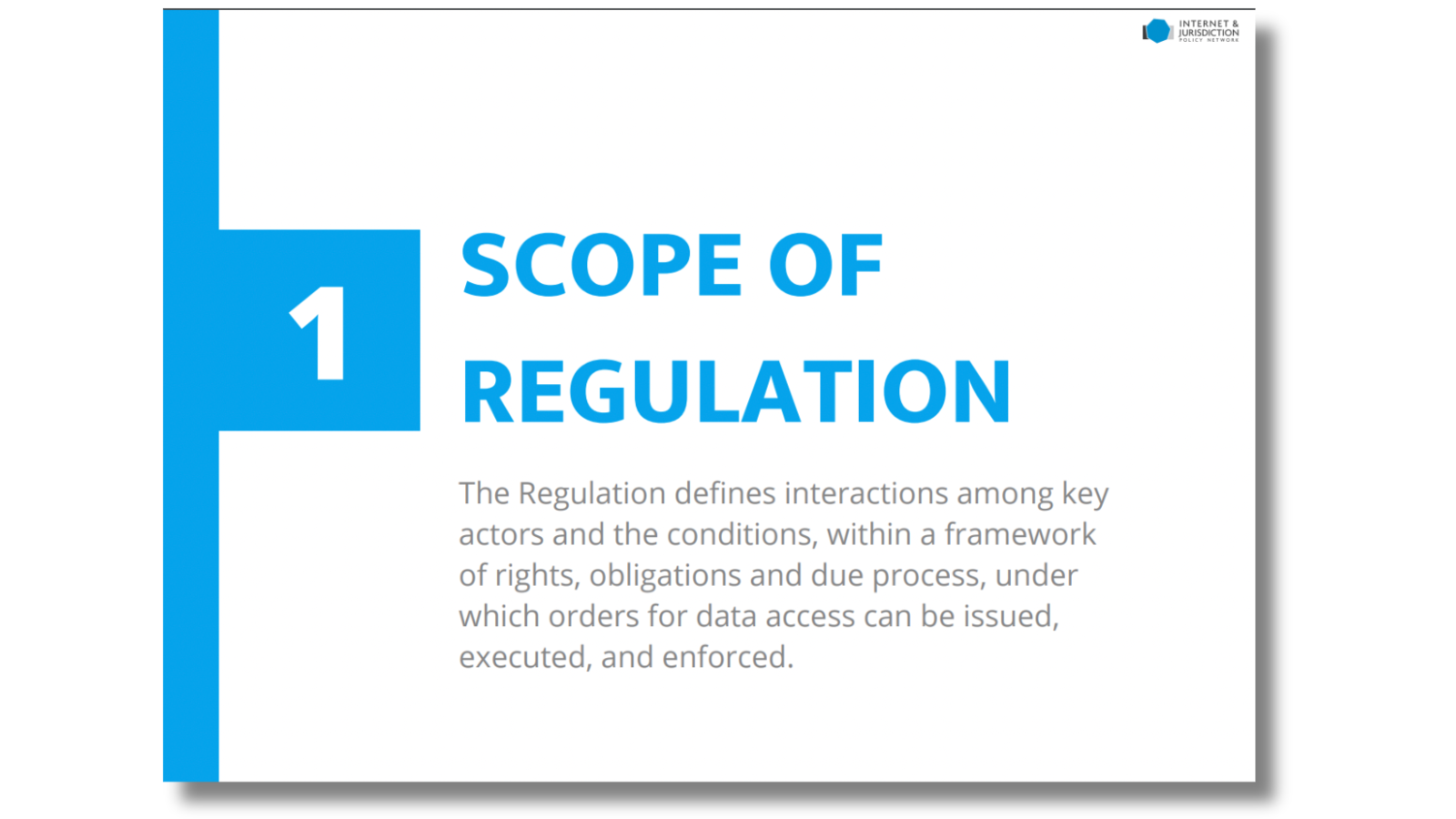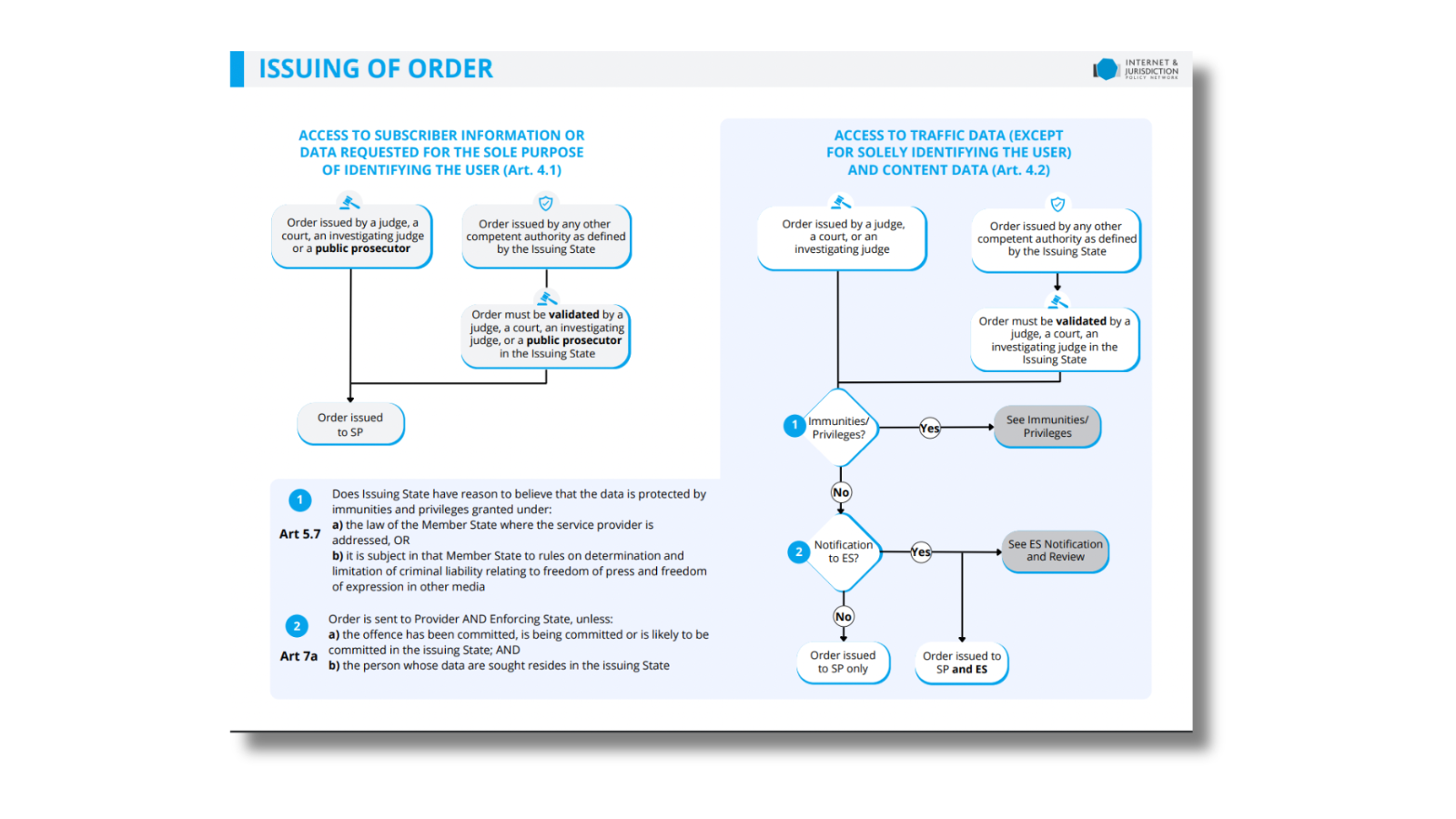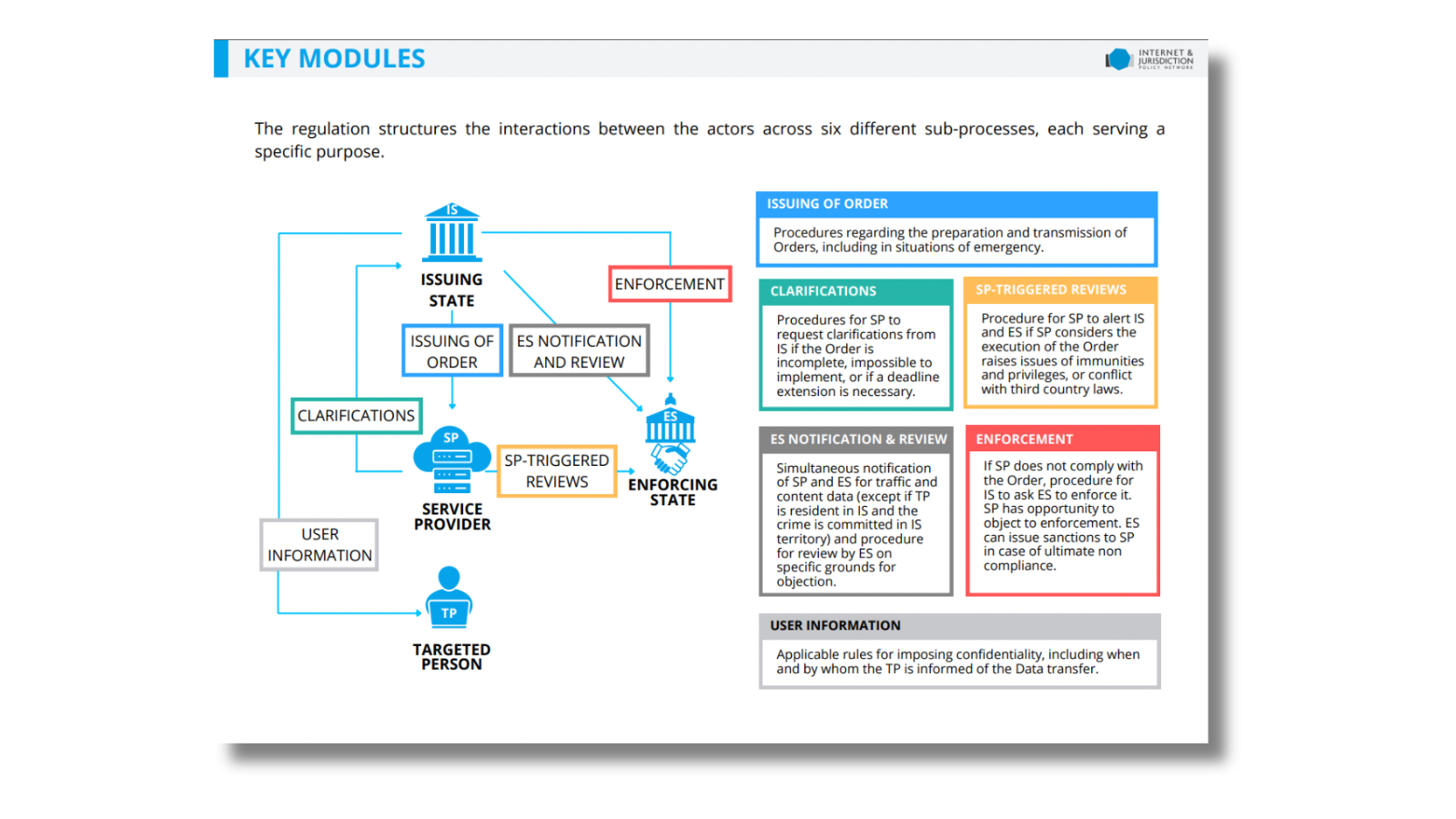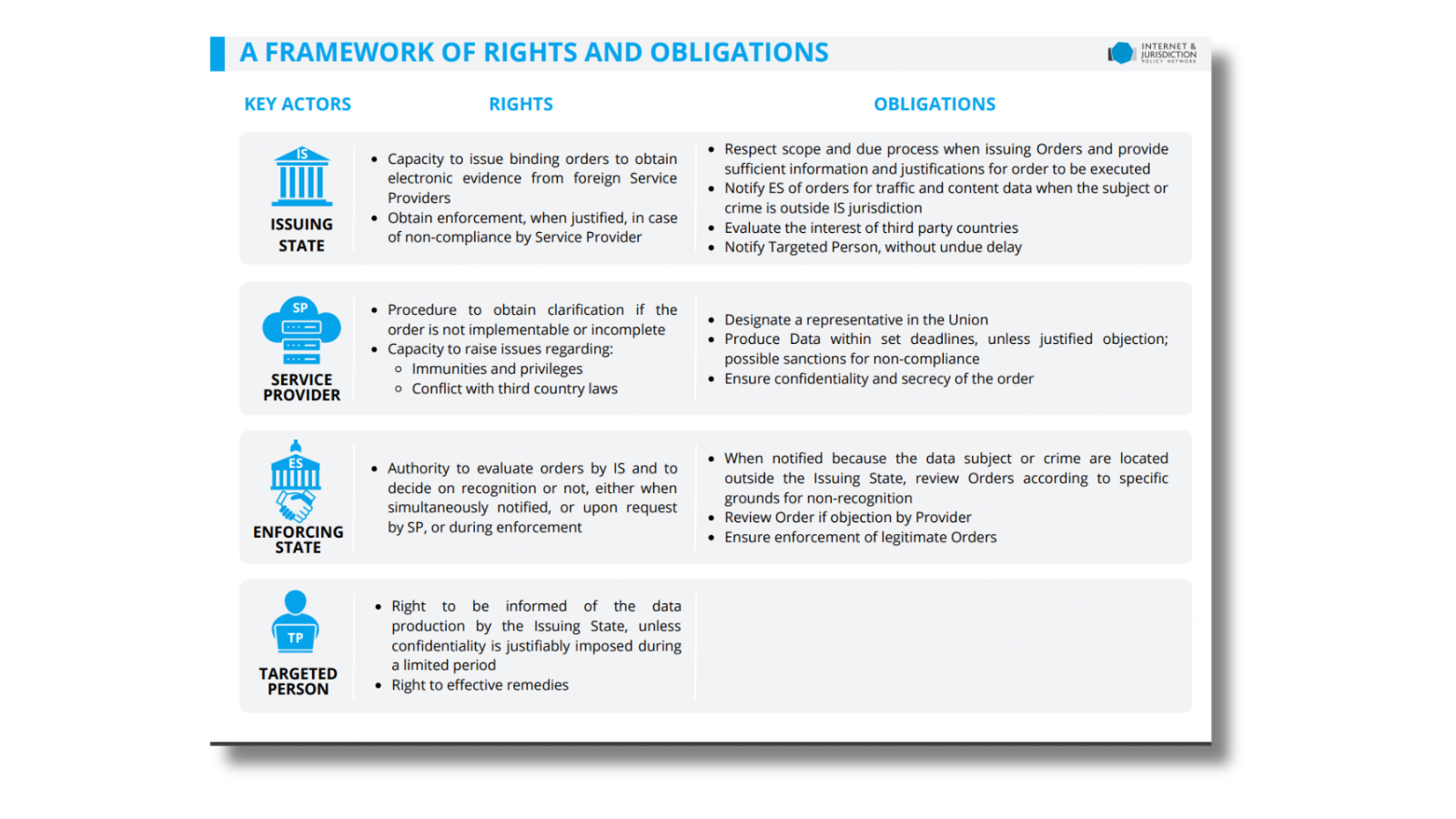In June 2023, the European Union adopted a Regulation and a Directive on cross-border access to electronic evidence (e-evidence). In that context, the Internet & Jurisdiction Policy Network (I&JPN) has released a graphical visualization of this regulation to help actors understand its modular architecture and key operational workflows.
E-evidence refers to digital data about user communications, stored by service providers, that is increasingly necessary to investigate and prosecute criminal offenses. A major challenge however pertains to the conditions of access to this data when it is stored by providers outside of the investigating country. Through its Data & Jurisdiction Contact Group, I&JPN has been leading work for over ten years on the issue of cross-border access to electronic evidence.
The EU e-evidence regulation puts in place rules that allow law enforcement and public authorities from one country to obtain stored electronic evidence from service providers located in another state. The regulation is also complemented by a directive requiring all service providers that offer services within the EU but are based outside of the Union to designate a legal representative within an EU member state.
“This ambitious regulation is an elaborate architecture, with many interlocking parts. It reflects the complexity of the issue and the difficult balancing between increasing efficiency in criminal investigations and ensuring high due process guaranties.” said Ajith Francis, Director of Policy Programs, I&JPN
The regulation is the culmination of over five years of intense debate and dialogue and incorporates elements from the different proposals over time (Commission, Council, and LIBE Committee versions) to address some key fundamental issues such as due process, checks and balances, and enforceability. This represents a major milestone to overcome the limitations of the traditional Mutual Legal Assistance Treaty (MLAT) system that is ill-adapted to the scale and transnational nature of cross-border access to electronic evidence.
“Significant capacity building will be needed before the new regulation fully comes into force, in order to inform the respective actors of its implications. Based on its more than 10 years of work on this issue, the I&JPN Secretariat will provide useful material and resources to support this effort.” said Bertrand de La Chapelle, Executive Director, I&JPN
- Read here a blog prepared by the I&JPN Secretariat on key highlights of the E-Evidence regulation, based on the I&JPN Secretariat’s work on the topic.
- You can consult the regulation and read more about the next steps here
- Contact the I&JPN Secretariat here if you are interested in a presentation on the visualization and I&JPN analysis.

